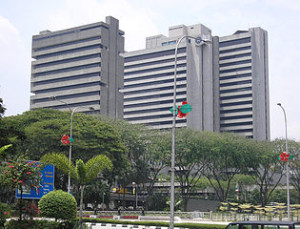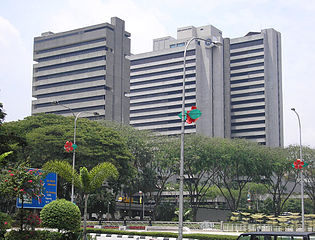 The Malaysian economy will remain resilient this year, but needs to watch out for the challenges ahead, according to Bank Negara Malaysia (BNM) Deputy Governor Sukudhew Singh.
The Malaysian economy will remain resilient this year, but needs to watch out for the challenges ahead, according to Bank Negara Malaysia (BNM) Deputy Governor Sukudhew Singh.
Sukudhew came out with the statement following the recent release of the “BNM Annual Report 2014” that forecasts the Malaysian economy to post lower growth this year compared to 2014.
“Despite a challenging external environment, the Malaysian economy is expected to register steady growth of 4.5%-5.5% in 2015, supported mainly by sustained expansion in domestic demand amid strong domestic fundamentals and a resilient export sector,” said the report.
The growth pace is slower than the country’s recorded growth of 6% in 2014, which is higher than the 2013 expansion of 4.7%. BNM said last year’s performance was driven primarily by the continued strength in domestic demand and improved external trade.
It added: “Net exports turned around to contribute positively to growth after seven years of negative contribution, as Malaysia benefitted from the recovery in the advanced economies and the sustained demand from the regional economies. While the growth in private domestic demand remained strong, public sector expenditure registered slower growth, consistent with the Government’s fiscal consolidation efforts.”
Domestic demand will continue to anchor growth in 2015, driven by private sector spending. After registering five consecutive years of above-average growth rates, private consumption is expected to grow by 6% in 2015.
In the external sector, after a strong performance in 2014, the growth of gross exports is projected to moderate, amid lower commodity prices. Exports of manufactured products, however, are expected to increase at a stronger growth rate. Gross imports growth is expected to be higher in 2015, amid continued growth in intermediate imports given the expansion in export-oriented manufacturing and higher growth in capital and consumption imports in line with the continued growth of domestic demand.
Sukudhew said managing the risks from potential destabilizing global financial developments is the top challenge for the Malaysian economy.
He said the other prevailing challenges are weak oil and commodity prices, addressing fiscal concerns, further enhancing export competitiveness and export growth, attracting more high-quality investment, and increasing higher-income employment opportunities.
“Given that we can’t do anything with what is going to happen outside the country, and we also can’t withdraw from the global economy and the financial system, what we should do is to ensure our fundamentals, through the fiscal policy, remain strong,” he said in a news report by Bernama, Malaysia’s national news agency.
He said economic diversification and strong fundamentals will help mitigate the impact of adverse external development.
Malaysia has the capacity to deal with capital flows as the country has ample reserves, a well-developed and resilient financial system, and a deep capital market, he added.
Business forecasts
Meanwhile, industry watchers also came up with their own forecasts for Malaysia’s growth outlook for the year.
The Malaysian Rating Corp Bhd (MARC) said Malaysia’s real gross domestic product (GDP) is likely to grow by 4.7% in 2015 amid lackluster external demand and decelerating domestic demand growth.
It said rising inflationary pressure expected in the second half of 2015 and tighter lending standards will likely weigh on real GDP growth to less than 5% this year.
“On balance, MARC foresees the Consumer Price Index growth to be in the range of between three and 3.5 per cent in 2015, slightly higher than Bank Negara Malaysia’s forecast of between two and three per cent,” he said in a statement Friday.
On the other hand, the Association of Islamic Banking Institutions Malaysia projects a GDP growth of between 4.5% and 5.5% for the country this year.
It said this is based on the measures and steps taken by BNM.
Photo: Two hundred percent





